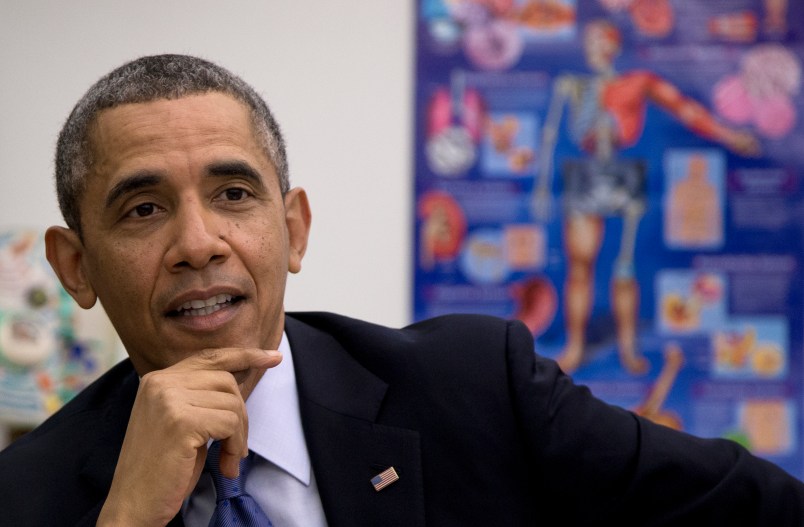In most Obamacare analyses, the law’s $64,000 question is whether enough healthy people are enrolling in private coverage. That metric is important for its long-term success. But the flip side of that question is: Are sick people who had been shut out of the insurance market prior to the Affordable Care Act getting the coverage they need?
A study released Wednesday looked at prescriptions issued to early Obamacare enrollees, and its findings suggest that some of those people have gotten coverage and are using it. It’s not the definitive measure of how the law is doing, but it is another data point in the ongoing effort to gauge the impact of health care reform.
Express Scripts, a large pharmacy-benefits manager, issued an analysis of 650,000 pharmacy claims from Obamacare enrollees through Feb. 28. The study was first reported by the New York Times.
It found that Obamacare enrollees were receiving specialty medications at 47 percent higher rate than people insured outside the health care reform law. They were receiving HIV medication at four times the rate of others, pain medications at a 36 percent higher rate, anti-seizure medications at a 27 percent higher rate, and antidepressants at a 14 percent higher rate.
“This early analysis suggests this new benefit is providing patients with access to the medication they need,” the authors wrote.
A few things could be happening here. First, people who were already insured, but needed to sign up for a new plan under Obamacare, were always expected to make up a significant portion of early enrollees. That’s because, as these results indicate, many of them likely had medications that they needed to maintain.
The other population expected to enroll early were people with pre-existing conditions who were either uninsured, because they were denied coverage or pre-Obamacare coverage was too expensive, or who were enrolled in expensive high-risk pools prior to the law. For example, people with HIV, based on these findings, accounted for a major share of Obamacare’s early enrollment.
“This is really good to get people with HIV on medication and into care and on treatment,” Carl E. Schmid, deputy executive director of the AIDS Institute, an advocacy group, told the Times. “People with HIV were basically frozen out of the private insurance market up until now.”
The findings largely track with policy experts’ expectations.
“The initial enrollees were no doubt those who already had insurance and were sick and knew they absolutely needed coverage,” Larry Levitt, vice president at the Kaiser Family Foundation, told TPM in an email. “The people who rushed to fill prescriptions were probably those already diagnosed with conditions like HIV and had treatments in place.”
Express Scripts estimated that 57 percent of the Obamacare enrollees in its study were either uninsured or previously enrolled in a plan that didn’t interact with the company. There is a question of cost, too: Obamacare enrollees are paying a higher percentage of the costs of their prescriptions, according to the study.
At first glance, this could look like bad news for the law. If mostly sick people signed up for coverage, it could lead to premium spikes down the road. But the study doesn’t account for the 2 million-plus people who enrolled during the law’s March surge — people who experts expect will be younger and healthier.
“This is definitely something one needs to watch, and you can bet insurers are looking at it closely. But it is important not to over-interpret this data since it was very early,” Levitt said. “I suspect we’ll see a very different picture when we look later in the year once the last-minute enrollees are included.”






